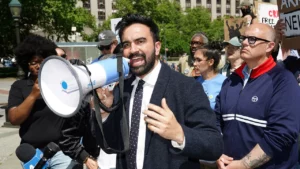
On The Bridge To The Future: With AI
As we stand at the precipice of a rapidly evolving artificial intelligence (AI) landscape, it is crucial to consider the implications and consequences of these advancements on our world. In light of recent discussions, I would like to share some thoughts on this pressing matter.
Philosophically, we must ponder how these technologies will impact our societies, extending beyond business realms to affect the very fabric of our daily lives. What type of analogies or frameworks can guide us in navigating the uncharted territories ahead? One such framework was recently shared by Alvin Graylin, which I found particularly thought-provoking.
Graylin presented three distinct approaches toward new AI technologies: slowing down and regulating their deployment, accelerating their growth to rapidly improve the world, and a selective approach that balances the two. However, he also proposed an alternative perspective – one that frames our relationship with AI as standing on a bridge, either with or without tethers.
This metaphor is strikingly relevant, as it highlights the interconnectedness of humanity. “We have 8 billion people already, everybody’s tied together,” Graylin emphasized. “So if we fail, we all fail.” This reality underscores the imperative to consider the consequences of our actions on a global scale.
Furthermore, Graylin brought attention to several critical issues that demand immediate attention. Job displacement and its ensuing mental health implications are likely to be among the most pressing concerns. In a society where one’s job often defines their identity, this shift could have far-reaching repercussions on individual well-being and societal cohesion. The potential for AI-driven misinformation and chaos is another significant concern.
Graylin also highlighted the ongoing geopolitical race around AI development, which has already sparked efforts to tighten export controls and contain China in the context of AI technologies. It’s undeniable that both the United States and China are actively competing in certain aspects of AI research.
Despite these challenges, Graylin expressed optimism regarding the prospect of AI maturity. While initial issues may arise, he suggests that these problems will eventually subside as the technology advances. This notion offers a glimmer of hope, given the exponential growth of AI’s capabilities.
As we move forward, it is essential to acknowledge both the benefits and drawbacks of AI disruption. We must confront these challenges head-on and work towards solutions before they exacerbate. It is crucial that we navigate this future with confidence while preserving our humanity in a world where machines can perform an astonishing range of tasks.
In conclusion, as we stand at the edge of this technological revolution, it’s vital to recognize the immense potential of AI. By understanding the complexities and dilemmas that accompany its development, we may unlock a brighter future for all 8 billion individuals tied together on this bridge.
Source: https://www.forbes.com/sites/johnwerner/2025/03/30/on-the-bridge-to-the-future-with-ai/


